Вью ребят с белорусского турнира
Надеюсь на наших умельцев, что кто-то переведет
Ksenia Monko and Kirill Khaliavin: “The goal for this season is to make a big step forward – and do that beautifully”
Ksenia and Kirill during practice in Minsk, at this year’s edition of Ice Star
She has him – and he has her. Literally. Ksenia Monko and Kirill Khaliavin’s costumes for their free dance this season feature their portraits – and this is just one of their options; we’ll see in a matter of hours, in Lethbridge, Alberta, at this year’s edition of Skate Canada, if they’ll use those, or go for the black, more classic ones. One thing is sure though: 23-year-old Ksenia and 24-year-old Kirill are determined to make a step forward this season, and one of the aces up their sleeves might be exactly their gorgeous free dance, about a man and a woman – and the spark between them. Inside Skating talked to Ksenia and Kirill in Minsk, at the beginning of October, after the Russians won, for the second time in a row, the gold medal at Ice Star, a figure skating competition held in Belarus.
Interview by Alena Shukalo and Veronika Potaturko/Minsk, Belarus
Ksenia and Kirill, do tell us about your programs for this season…
Ksenia: The music for our short dance comes from the Japanese Anime Howl’s Moving Castle – and we try to skate it very light, very romantic, as if we were flying over the ice. I hope it turned out that way.
Kirill: As for the theme of our free dance, it’s the relation between a man and the woman. Unlike the dances from previous seasons, this is not a dramatic story, a tragedy; the emphasis is on choreography, the purity of the movements. We were inspired by Modern Style (Art Nouveau) when putting together this dance – by the connection between two people, but not by a particular story.
Who had the idea of each of these programs?
Ksenia: I chose the music for the short dance, as I’m a lover of the Japanese Anime, and Kirill came up with the idea for the free dance [to “Torn” by Nathan Lanier].
Kirill: At the end of last season, we understood that it was necessary to make a big step forward during off-season. We had enough time in front of us and we decided to work with our upper body more; and we danced both on the ice and in a dance hall.
Apart from our regular choreographer, Sergey Petukhov, we worked with a very talented specialist, who has extensive experience in all areas of choreography: Igor Rasporsky. He is one of the best experts in ballroom dance in Russia today. They both helped us with our lines and general feel for the music. We worked for some time in this particular direction and then started to put together the new free dance. And we transferred all these new things we learned during off-season into our skating – we tried to do it bigger, brighter, wider.
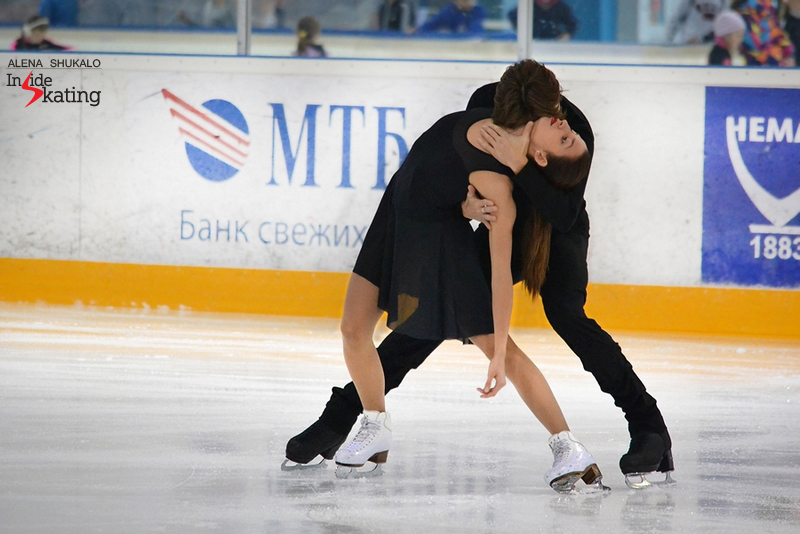
A wonderful pose from Ksenia and Kirill’s free dance, as performed in Minsk, at 2015 Ice Star
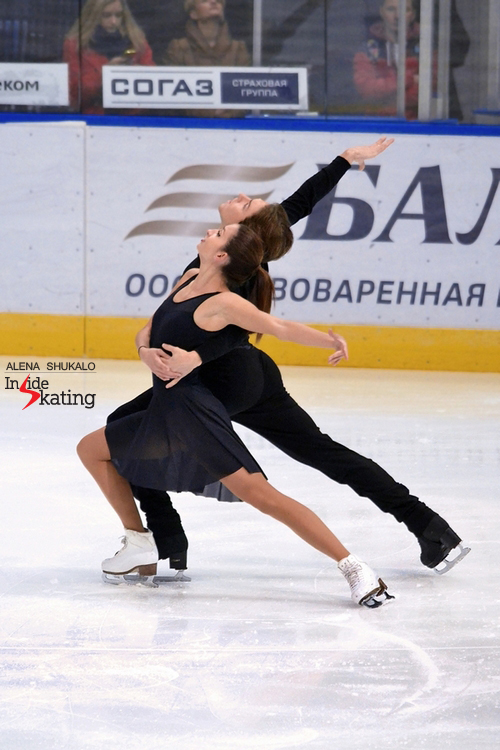
Bigger, brighter, wider…
So, the choreographer of your free dance is…
Kirill: There were several choreographers, each of them did a specific thing. Igor [Rasporsky] and Sergey Georgiyevich [Petukhov] laid the foundation of the free dance, and the dance itself was built on that. We put together the program during a camp with Aleksandr Zhulin and Sergey Petukhov – and when we returned from Turkey, Igor looked at the result and introduced some adjustments. In fact, the preparation of the free skating turned out to be quite long, but it was a very interesting process.
And what about the short dance?
Kirill: We decided to make a classical Waltz and a Polka. The music we chose is very bright, but, at the same time, very gentle and touching in places – and we wanted to transfer this particular mood into our dance. We had some ideas too, and the rest came from our coaches. The short dance was put together faster than our free one – but this doesn’t mean we like it less. We worked together and we are satisfied with the result. And in the free it was necessary to change some of the combinations. Even comparing with the version of the free dance skated at the Test Skates in Sochi, coming to Minsk, at Ice Star, we changed two or three things, because we understood they didn’t produce the effect we desired.
Ksenia: I assume there might be some other changes during the season…
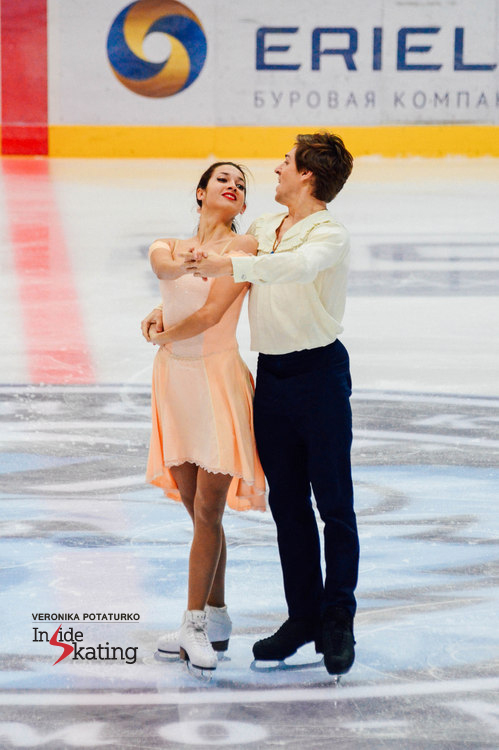
Ksenia and Kirill performing their short dance in Minsk, to music from the Japanese Anime “Howl’s Moving Castle”

Is there someone out there teaching you how to handle the emotional component of your programs?
Ksenia: Yes, there is. Sergey Georgiyevich Petukhov.
Kirill: He constantly works with us, explaining us everything, drawing parallels for each movement, approaching everything with his heart and soul – and this clearly inspires us a lot.
How have you prepared for this season?
Ksenia: We went on a camp in Turkey, in the city of Erzurum, and trained in the mountains, at 1.800 meters altitude. It was very hard in the beginning, but we got used to it eventually.
Kirill: We also tried to take the maximum of benefits from the fact that we were in the mountains.
How was Turkey?
Ksenia: Packing our bags to Erzurum, the guys who skate in our group, Alisa Agafonova and Alper Ucar, told us there was nothing to do there, no place to go, nothing to look at in particular. But when we arrived, there was this city in the mountains – actually, a pretty large city. And everything – hotel, skating rink, food – seemed to suit us. After training, we could use the swimming pool or take a steam bath at the hotel.
Kirill: The city hosted the Winter Universiade in 2011 and this gave an impetus to the development of the area. The sports base is impressive: a lot of football fields and stadiums, some skating rinks. At the same time we were there on the camp, two Turkish football teams, from the highest Turkish league and from the second one, were there too and stayed in the same hotel as us. But the city is not Europeanized at all, it is completely Muslim, and this was surprising to us.
Ksenia (with a smile): We were actually told not to wear short skirts. And though the air temperature was about 30° almost the whole time, we always wore trousers.
Kirill: More than that, we were in Erzurum in a period of time very important to the Muslims, the month of Ramadan, and everything was rather unusual to us; yet, very interesting.
Talking about the Ice Star competition in Minsk, this is the second time you are coming here prior to the Grand Prix series. Has this become a a tradition or is it just a coincidence, a combination of circumstances?
Ksenia: When we found out that our first Grand Prix assignment was Skate Canada, we realized it was necessary to come to Minsk, at Ice Star, as we did last season. Because, first of all, we liked Minsk and, secondly, we thought that after Ice Star we would still have the time to make some changes (and get used to the them) before going to our first Grand Prix. Our second assignment is Rostelecom Cup, in Moscow.
So, Ice Star in Minsk opened your new season. Certainly, it was a different feeling here than at the Test Skates in Sochi, in September…
Kirill: Of course, completely different feelings and experiences. In Sochi, people looked at the content of our programs, the choreography, the levels, the overall ideas of the routines. But no one compared us with the rest, no one gave us scores… The technical controllers told us to do this, not to do that, but only here, in Minsk, we actually got an assessment of everything we did.
Last season, it was a noticeable difference between the scores you received in Minsk, at Ice Stars, and the ones received in Skate Canada – and, if we can say that, not in your advantage. The situation can, of course, repeat – but why does this happen?
Kirill: Yes, there was a difference. Last year in Skate Canada it was a strong list of participants, there was quite a battle for a place on the podium. Plus, in Canada we made some mistakes in our dances – and the competition is so fierce that no one will award high scores for nothing. It’s possible that this year’s scores to be lower again – but the components scores (PCS) tend to grow during the season, with a maximum at the World Championships. Yet, we feel that we’ve improved considerably since last season – in the overall quality of our skating, the choreography, in the confidence in ourselves. Therefore, we count on the fact that judges and fans will appreciate our programs.
Your costumes are often discussed by your fans. Do you take part in the process of creating them?
Kirill: Yes, of course. We try to participate in all the creative aspects of our preparation for next season, as much as possible.
One of the costumes for the free dance this season seem to feature your portraits…
Ksenia: It was our idea, yes, and we actually have several costumes for the free dance. Some have our portraits, and others are black, with a more classic design.
Kirill: We’ll see how we feel in these versions of the costumes. The most important thing is that the design must transmit the idea and the style of the dance. It’s essential that our feelings, our movements, the music, the elements of the dance, the costumes are all one, going in the same direction.
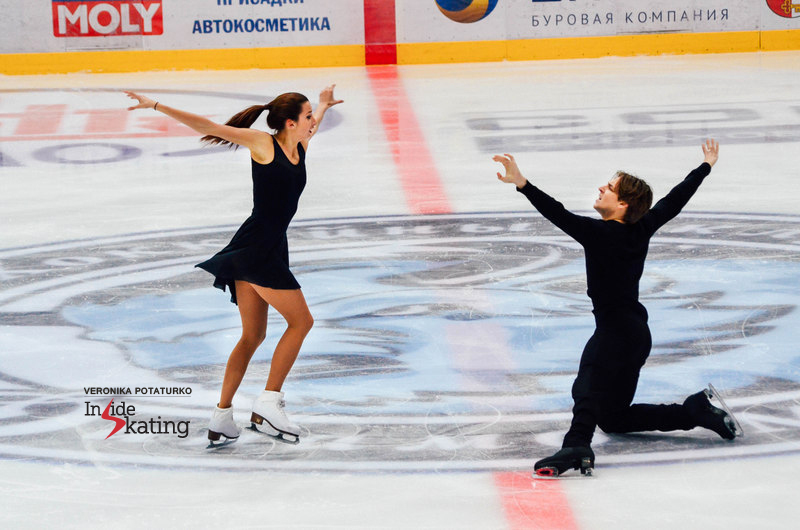
Ksenia, Kirill – and some of their costume options for the free dance. In Minsk, they used the black ones in competition and the ones featuring portraits were tested during practice
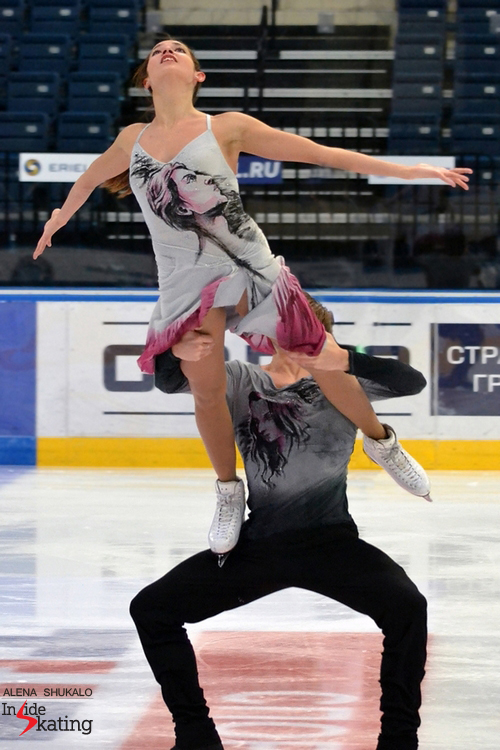
After the Test Skates in Sochi, a video of your free dance was published on your official group/page on VK. Do you follow the comments, read them, take them into consideration? What opinions do you treasure when it comes to the feedback for your programs?
Kirill: There are experts that we always listen to: coaches, judges, technical controllers. There are also people who pay attention to our progress, to our programs, and conduct our support group. They periodically send us messages with their comments and comments from others. We are very grateful to them for their support and we hope to see all our fans at the home ground Grand Prix event, the Rostelecom Cup in Moscow.
On the other hand, we removed ourselves a year ago from all groups devoted to figure skating. The reason is that we want to plunge as much as possible into the making of our programs and we don’t want to be distracted by anything else. Because there are, of course, fair comments and remarks – but also ones which are not absolutely fair.
Ksenia: My mom used to read pages of different forums a while ago – and she would read this and that and get worried. And then I told her: “Mom, you don’t have to read it, it will only upset you”. And I finally convinced her not to, so she only receives now the information from our group.
Mothers worry, that’s what they do. But does she watch your performance during a live broadcast, let’s say?
Ksenia: No, my mom never watches us, she always leaves the room. My dad is watching, along with my sister, and they tell mom the result when everything is done.
As well as in any kind of sport, figure skating is about success, but also about failures. When you encounter difficult times, what do you do? How do you find the motivation to go further?
Kirill: Well, first of all we’re trying to find and understand the reasons for failing; and then we’re striving to correct the mistakes. Actually, you can come to practice completely broken into pieces, with nothing pleasing you, but once you’re there on the ice and start working, once you start sorting everything on their shelves and skating pieces of the program, you’re all of a sudden calm and absolutely confident.
To be able to overcome difficult times and move forward – is this professionalism, in your opinion?
Kirill: It’s experience, I guess.
Ksenia: Yes, there are both good times and failures. But when you fall, it’s necessary to shake everything off, rise and go further.
So you haven’t experienced a moment when you wanted to hang up your boots – say goodbye to figure skating and do something else?
Ksenia: No.
Kirill: No, we haven’t.
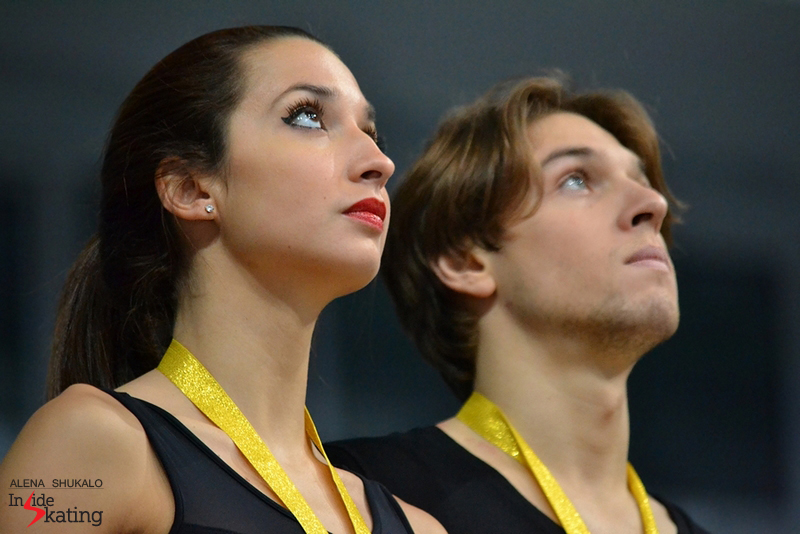
Russia’s Ksenia Monko and Kirill Khaliavin are aiming high this season
We’d like to ask you that too: do you have such a thing as a favorite ice dance couple? From the ones skating now – or from the history of the discipline…
Ksenia: Until now, neither I, nor Kirill managed to look at this season’s new programs – so I can’t tell you anything on that matter. But, in general, it is always a pleasure to watch Kaitlyn Weaver and Andrew Poje. They have such musical programs…
Kirill: And this is the case, in general, with all the dancers in Anjelika Krylova’s group. All of them, coaches, athletes, feel the music; and this particular thing is transferred on the ice. Their dances are light, beautiful, memorable.
And yet, this particular group of Anjelika Krylova and Pasquale Camerlengo lost two couples during off-season. How would you explain this need of transition to other groups? When there’s failure, you can understand it – but why athletes, despite visible success, often change coaches?
Kirill: I am sure that professionals like Anjelika Krylova and Pasquale Camerlengo will overcome this situation adequately and beautifully. Things like that happen. Maybe the changes come from the athletes’ aspiration to become better; or maybe the skating philosophy in other groups is closer to them, suit them better.
Which are your goals for this season?
Kirill: First of all, we want to show the work we’ve done so far and, doing that, we want to enjoy the whole process. More than that, we want people to see the spark between us. The goal for this season is to make a big step forward – and do that beautifully. I’m sure that if we show right from the start what we can do, the results will come. And, above all, we want our coaches and our fans be satisfied with us. We worked very hard – now it’s time to show this in competition.
Other photos from 2015 ICE STAR in Minsk

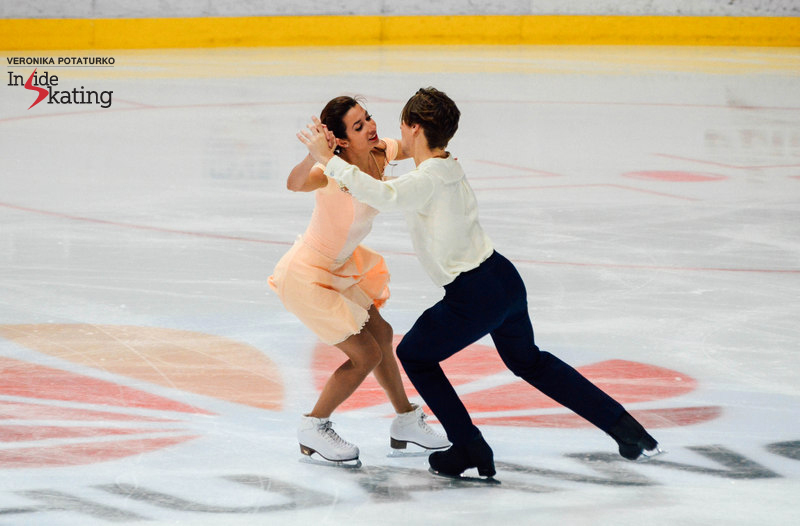
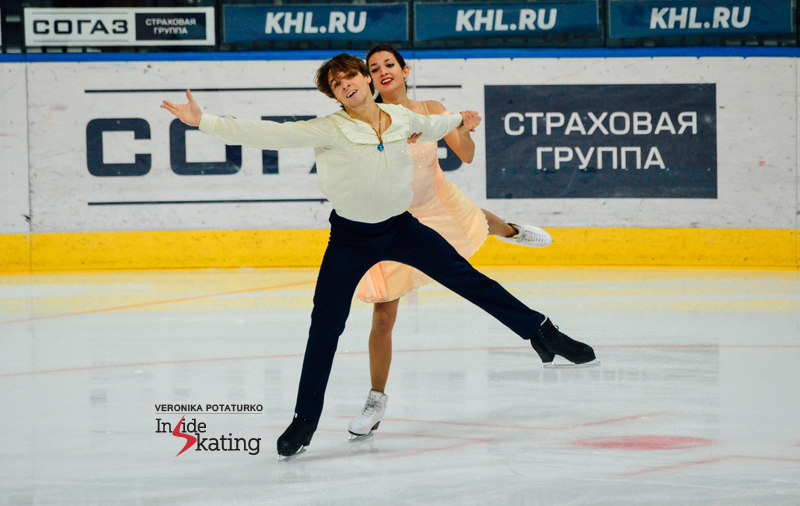
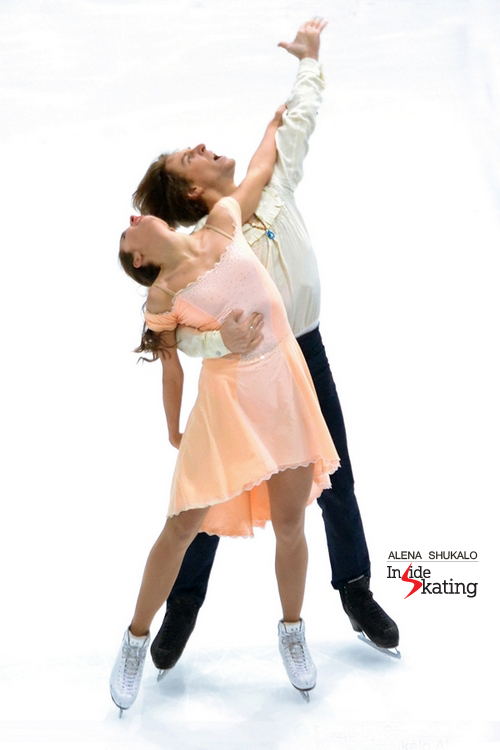
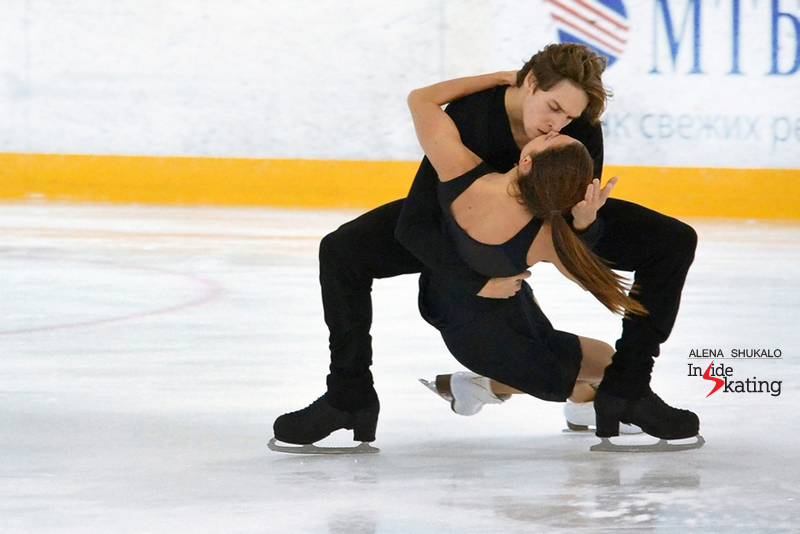


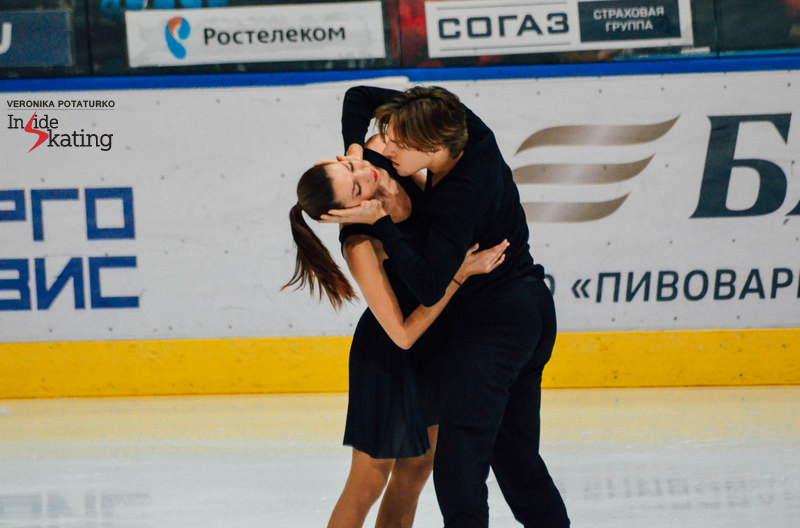

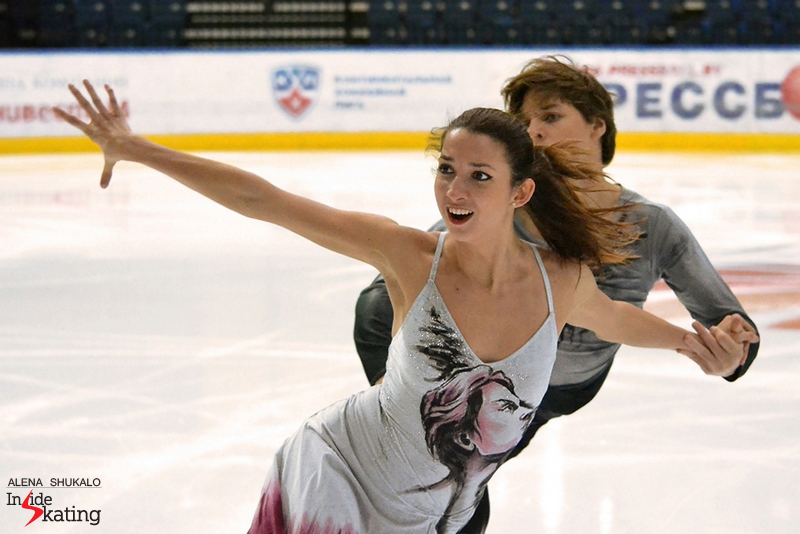
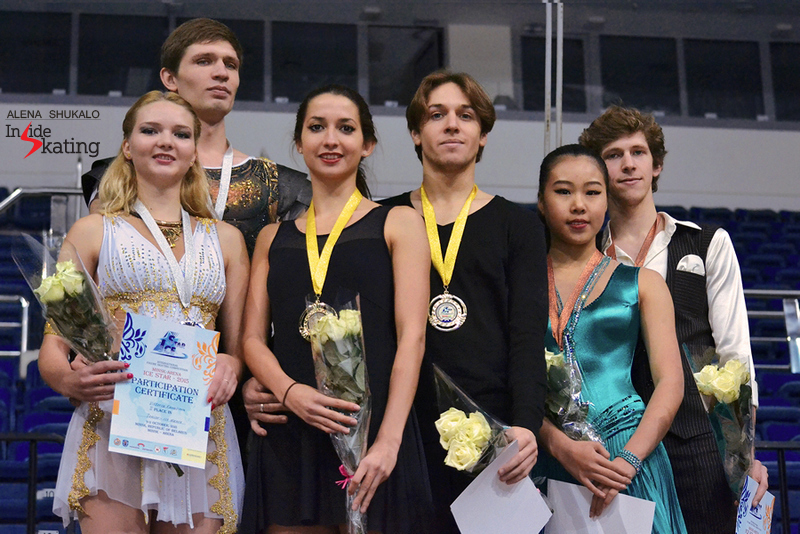

Looking ahead with confidence and optimism
http://www.insideskating.net/2015/10/30/interviews/ksenia-monko-and-kirill-khaliavin-the-goal-for-this-season-is-to-make-a-big-step-forward-and-do-that-beautifully




